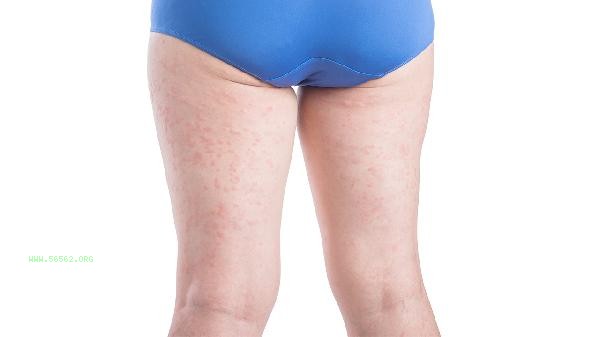Unexplained muscle soreness in the thighs can be improved through hot compress massage, moderate stretching, electrolyte supplementation, adjustment of exercise intensity, medication relief, and other methods. Muscle soreness may be related to factors such as lactate accumulation, electrolyte imbalance, muscle strain, inflammatory response, and nerve compression.

1. Hot compress massage
Apply a hot towel or warm water bag to the sore area for 15 minutes, and massage in circular motions with the palm to promote local blood circulation. The temperature of hot compress should be controlled at around 50 degrees to avoid burns. When massaging, pushing and pressing from the distal end to the proximal end of the thigh can help accelerate lactate metabolism. Hot compress before bedtime at night has a better effect, and can be combined with lavender essential oil to assist relaxation.
2. Moderate stretching
Perform static stretching of the quadriceps muscle. After standing on one leg, use your hand to hold the back of your foot and gently pull it towards your buttocks, holding for 30 seconds to switch sides. Alternatively, adopt a lunge stance to press down on the legs, bending the front legs 90 degrees and then pressing down on the hips. Stretching should be done slowly, with 3 repetitions of each movement, which can effectively relieve muscle spasms.
3. Supplement Electrolytes
Drink electrolyte drinks or diluted salt water containing potassium and sodium daily, and consume potassium rich foods such as bananas and spinach. After sweating heavily, it is necessary to replenish water in a timely manner to maintain electrolyte balance in the body and prevent abnormal muscle contractions. At the same time, ensure sufficient daily intake of high-quality protein, such as egg white, chicken breast, etc., to help with muscle repair.

4. Adjust exercise intensity
In the near future, lower limb weight-bearing exercises such as climbing stairs and squats should be reduced, and low impact training such as swimming and cycling should be replaced. Before and after exercise, it is recommended to fully warm up and relax. It is recommended to use a fitness bracelet to monitor heart rate and control the intensity at around 60% of the maximum heart rate. First time fitness enthusiasts should adopt the principle of gradual load increase.
5. Drug relief
Non steroidal anti-inflammatory drugs such as diclofenac sodium gel can be applied externally under the guidance of doctors, or ibuprofen sustained-release capsules can be taken orally. When experiencing severe spasms, muscle relaxants such as methylprednisolone hydrochloride tablets may be considered, but it should be noted that such drugs may cause drowsiness side effects. It is not recommended to take painkillers on your own for a long time.

It is important to maintain a regular daily routine and avoid prolonged sitting and standing. Get up and move for 5 minutes every hour. Choose a mattress with moderate softness and hardness, and place a thin pillow under the knee to reduce thigh pressure during sleep. If the soreness persists for more than a week or is accompanied by swelling and fever, pathological factors such as myositis and venous thrombosis should be investigated. Warm up and stretch thoroughly before and after exercise, gradually increase the amount of training, and replenish carbohydrates and protein in a timely manner after exercise. Long term office workers are recommended to use standing desks and regularly undergo lower limb muscle strength training.








Comments (0)
Leave a Comment
No comments yet
Be the first to share your thoughts!